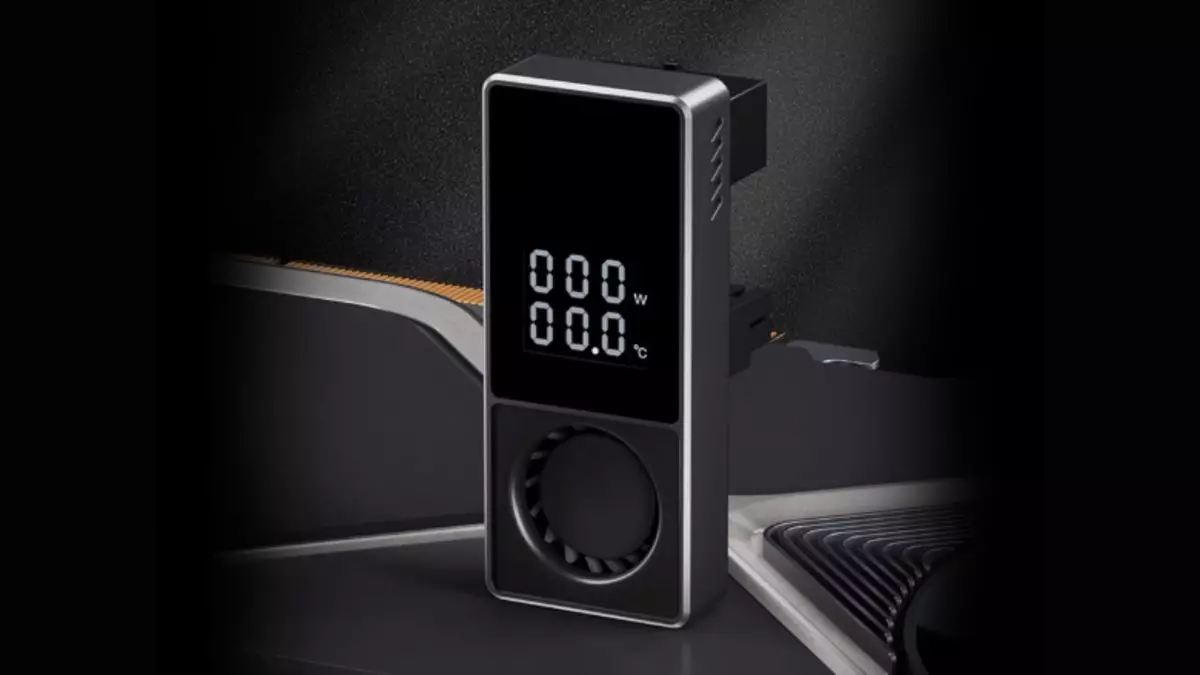With the recent launch of the RTX 50 series, the enthusiasm surrounding high-performance graphics cards is palpable; however, many gamers remain loyal to the RTX 40 series. This allegiance can be attributed, in part, to the accessibility issues associated with the newer models. The RTX 50 series has been difficult to obtain, urging gamers to opt for the more readily available RTX 40 cards, which, despite their power, come with notable thermal and electrical challenges. As these graphics cards demand increasing power, a new product has surfaced to alleviate the concerns surrounding overheating and power inefficiency.
The innovative 16-pin adapter from K.A, available on the Chinese shopping platform TaoBao for approximately $30, offers gamers a dual-functionality solution: it not only changes the orientation of the power connection but also incorporates active cooling through its built-in fans. This adapter, designed specifically for the RTX 40 series, features a small display that monitors power consumption and temperature levels in real-time. Its thoughtful 180-degree design effortlessly integrates into a gaming setup, allowing users to keep a close eye on vital statistics while improving airflow around the cables.
This is particularly important given the increasing temperatures associated with high-performance setups. With users often opting for visually attractive builds, this adapter also contains aesthetic value, especially for those with transparent cases where hardware can be showcased proudly.
In the past few years, concerns have arisen surrounding power management for high-end graphics cards, particularly following the RTX 4090’s launch. The infamous connector melting incidents raised alarms among users about the reliability of their hardware. Factors contributing to these failures included both the design flaws of the 12V HPWR connectors and user oversight in ensuring proper connections. The release of color-coded cables by companies like MSI attempted to rectify these issues, providing users with a visual cue to confirm secure plug-ins.
Despite these improvements, the high TDP (thermal design power) of premium graphics cards underscores the need for effective thermal management. Therefore, adaptive solutions are essential; enhancing air circulation around these components could be a decisive factor in maintaining optimal performance levels and extending the lifespan of the hardware.
While the new adapter seems promising, it’s prudent to heed warnings from industry experts regarding the use of third-party products. The integration of adapters or extensions into the power supply system can pose risks if not approached with caution. These experts advocate for acquiring power supplies that come complete with their manufacturer’s cables, eliminating potential compatibility or safety issues.
For most users, sticking with manufacturer-standard cables is the best practice to ensure a higher degree of safety and reliability. DIY approaches can be risky, and gamers should weigh the benefits against potential hazards such as inadequate power delivery or, worst-case scenario, hardware failure.
As the demand for powerful graphics cards grows, one can hope that manufacturers will prioritize integrated monitoring features within their next generations of products. Considering the complexities of managing both power and thermal outputs, innovations like K.A’s adapter are a positive step towards a safer and more informed gaming experience.
As gamers advance into the era of the RTX 5090 and RTX 5080 models, the expectations for performance and reliability will only escalate. Lessons learned from current hardware challenges can shape the development of future graphics cards and power supplies, streamlining the connection process and enhancing safety protocols.
While the K.A adapter represents a commendable advancement in addressing gaming concerns, it serves as a reminder that innovation must always follow safety and quality-best practices in the high-stakes environment of gaming hardware. The ongoing evolution of graphics technology promises exciting developments, but caution is non-negotiable.

